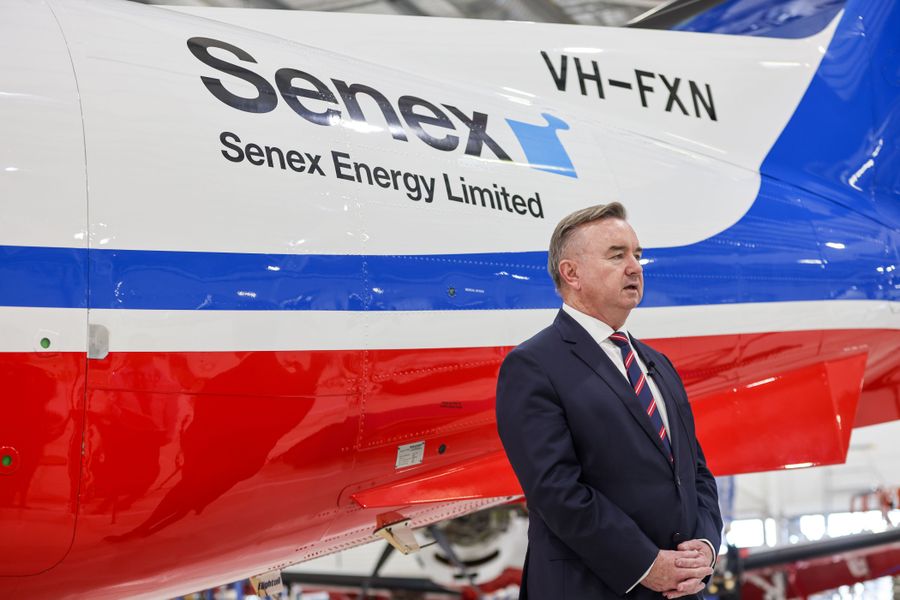
Senex Energy has extended its total commitment to the Royal Flying Doctor Service (RFDS) Central Operations to $1 million with a further three-year major sponsorship.
The commitment of a further $300,000 supports the ongoing operation of aircraft like the Senex-badged “flying intensive care unit” that transports up to 1,000 patients a year from remote South Australia to major hospitals.
Senex’s contribution ensures 24/7 aeromedical support for employees who work almost 1,000 kilometres north of Adelaide in the Cooper-Eromanga Basin, as well as those living in and visiting rural and remote South and Central Australia. The RFDS also provides ‘fly-in’ GP and Nurse clinics, dental clinics and 24/7 telehealth services to remote communities.
The petroleum explorer and producer’s partnership with the RFDS began in 2013 and, with this further three-year agreement, now totals more than $1 million.
Senex Managing Director and CEO Ian Davies said the oil and gas industry embraced its responsibility to help people and communities in areas where it operated.
“All of us at Senex are excited to be continuing our support of the Royal Flying Doctor Service in bringing world-class medical care to remote communities,” Mr Davies said.
“This refreshed partnership will bring to almost a decade our joint efforts that have already seen Senex-badged aircraft undertake more than 5,200 aeromedical missions and 6,500 patients being airlifted so far. We thank the Flying Doctor for their unwavering dedication and service to the wellbeing of people in the Outback, including our own workers in the Cooper Basin.”
Senex also contributes to the Cooper Medivac 24 helicopter, which can transfer landholders, tourists and employees – including at night – from remote locations to rendezvous with fixed-wing RFDS aircraft at the nearest airstrip.

Cooper Basin pastoralist and station manager Peter Nunn knows first-hand how the RFDS can be crucial when the worst happens.
He has been airlifted twice with life-threatening injuries from Clifton Hills, the world’s second-largest cattle property, on the Birdsville Track.
Senex operates on the property, which is in the remote north-east corner of South Australia.In the first incident, a car rollover, Peter suffered three fractured vertebrae and broken ribs and his passenger was trapped under the vehicle with concussion. The Senex-sponsored Flying Doctor aircraft lifted them to hospital.
In August this year, Peter was thrown from a motorbike while cattle mustering and returned to work only last week after healing from a fractured skull, fractured neck, broken ribs and a punctured lung. He says: “I was pretty happy to see the Flying Doctor arrive.”
Mick Francis, a Production Operator for Senex in the Cooper Basin, was injured and flown by RFDS to Adelaide earlier this year.“The injury was on the back of my leg so I would not have been able to drive myself, and even to be a passenger in a car would have been fairly painful,” he said.
“To have the RFDS out there to help guys like me in remote locations, and also the people who live out there as well, is very important and I’m very grateful.”
One of more than 70 RFDS flying intensive care units in Australia, the Senex-badged aircraft has:
• flown more than four million kilometres
• conducted more than 5,200 aeromedical missions
• airlifted more than 6,500 patients
• landed at more than 60 locations (SA and interstate)
• facilitated more than 20 health, and dental health, clinics in outback South Australia

Central Operations Chairman Peter de Cure thanked Senex Energy for its valuable contribution.
“The RFDS is proud to deliver more than 50,000 episodes of health care throughout the Northern Territory and South Australia every year – equivalent to someone every 10 minutes,” Mr de Cure said.
“The impact of Senex Energy’s support will reach far and wide, delivering long-lasting benefits to our rural and remote communities.
“The ongoing support from the entire community – including our public donors, community fundraisers, volunteers and corporate partners like Senex Energy – is critical to ensuring we continue to deliver the finest care to the furthest corner.”

